Having a list of dates and events which is not necessarily sorted by date e.g. like
# Date Event
04.12.2018 -4
23.06.2018 5
04.10.2018 3
11.11.2018 -9
08.03.2018 -4
08.03.2018 2
11.11.2018 -3
I would like to sum up the events and do a (e.g. linear) extrapolation, e.g. when the data will hit a certain threshold (e.g. zero).
It looks like smooth frequency and smooth cumulative seemed to be made for this.
But I am struggeling with the following:
a) how can I add a start value (offset), e.g. StartValue = 500
plot $Data u (strftime("%d.%m.%Y",timecolumn(1,"%d.%m.%Y"))):($2+StartValue) smooth cumulative w l t "Cumulated Events"
doesn't do it.
b) how can I get the cumulative data? Especially if the data is not sorted by date?
set table "DataCumulative.dat"
plot $Data u (strftime("%d.%m.%Y",timecolumn(1,"%d.%m.%Y"))):2 smooth cumulative with table
unset table
This look similar to this question (GNUPLOT: saving data from smooth cumulative) but I don't get the expected numbers. In my example below in the file "DataCumulative.dat", I expected unique dates and basically the data from the lower plot. How to get this?
The code:
### start code
reset session
set colorsequence classic
# function for creating a random date between two dates
t(date_str) = strptime("%d.%m.%Y", date_str)
date_random(d0,d1) = strftime("%d.%m.%Y",rand(0)*(t(d1)-t(d0)) + t(d0))
# create some random date data
date_start = "01.01.2018"
date_end = "30.06.2018"
set print $Data
do for [i=1:1000] {
print sprintf("%s\t%g", date_random(date_start,date_end), floor(rand(0)*10-6))
}
set print
set xdata time
set timefmt "%d.%m.%Y"
set xtics format "%b"
set xrange[date_start:"31.12.2018"]
set multiplot layout 2,1
plot $Data u (strftime("%d.%m.%Y",timecolumn(1,"%d.%m.%Y"))):2 smooth frequency with impulses t "Events"
plot $Data u (strftime("%d.%m.%Y",timecolumn(1,"%d.%m.%Y"))):2 smooth cumulative w l t "Cumulated Events"
unset multiplot
# attempt to get cumulative data into datablock
set table "DataCumulative.dat"
plot $Data u (strftime("%d.%m.%Y",timecolumn(1,"%d.%m.%Y"))):2 smooth cumulative with table
unset table
### end of code

